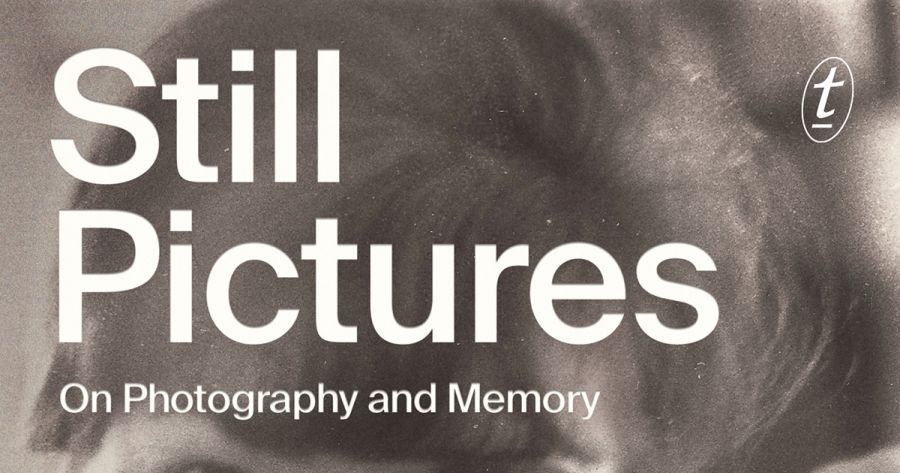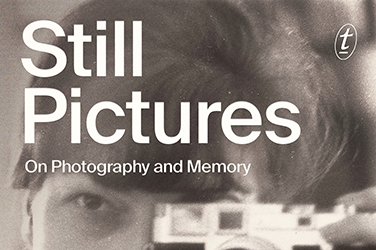
- Free Article: No
- Contents Category: Memoir
- Review Article: Yes
- Article Title: Nowhere to hide
- Article Subtitle: The ambiguous eye of Janet Malcolm
- Online Only: No
- Custom Highlight Text:
Janet Malcolm knew the difference between the remembered thing and the thing itself. Her writing life and 1984 masterpiece, In the Freud Archives, explored that crevice, asking: is what really matters how we experience life, not life itself?
- Featured Image (400px * 250px):

- Alt Tag (Featured Image): Georgina Arnott reviews 'Still Pictures' by Janet Malcolm
- Book 1 Title: Still Pictures
- Book 1 Biblio: Text Publishing, $29.99 pb, 170 pp
- Book 1 Cover Small (400 x 600):

- Book 1 Cover (800 x 1200):

The photographs come from Malcolm’s personal collection and feature family members, a teacher, a school friend, and a smiling middle-aged couple who animate the Czech Jewish sense of ‘American alienness’.
‘Lovesick’ opens with a blurry teenage group shot. Malcolm likens this to the least prepossessing of dreams, which, psychoanalysis tells us, reveal the most meaning, ‘if stared at long enough’. She stares in this chapter at Sigmund Freud himself, carried from this unremarkable image to the founder of psychoanalysis by the theme of ‘chronic longing’ and what Freud called ‘transference love’. Malcolm reads Freud closely – his language, slips, evasions – giving him credit for honesty (something he rarely gave others).
A photograph of Malcolm, middle-aged, cautious, confident, launches an account of the coaching she received for the second trial for libel occasioned by the publication of In the Freud Archives. Malcolm realised only after the first trial that the mode of presentation she had cultivated at the New Yorker – reticent, self-deprecating, witty – conveyed to the court a woman who was ‘arrogant, truculent, and incompetent’. ‘Not many of us get second chances’: Malcolm’s subjects, including herself, do. It is a fascinating postscript to the libel case: the ‘gentle correction of my self-presentation … took me to unexpected places of self-knowledge’.
Malcolm, who began her career as a photojournalist, has much to offer on the subject of the photograph’s frame – after all, its epistemological cropping was the theme of her writing life. Malcolm was also a visual artist and an art critic. Her essays on photography in Diana & Nikon (1980) gave depth to experiments such as the avant-garde home snapshot moment, recalled in the chapter titled ‘A Work of Art’, which opens with a seemingly unposed photograph of a couple on a tennis court, their backs turned. Malcolm explains that, in an absurdist act, her second husband Gardner Bosford kept it on his desk, though he had no idea who the couple were. Once in Diana & Nikon, it became art. Here Malcolm uses the word ‘mischief’, and her account of the photograph’s unlikely prominence (reinscribed here) reads like a belly laugh.
A writer for The New York Review of Books and the New Yorker, Malcolm is often remembered for her critique of the kind of narrative non-fiction those publications helped pioneer. A 1989 two-part article titled ‘The Journalist and the Murderer’ contended that journalism was ‘morally indefensible’ because the truth was never simple, yet column inches and the readers’ desire forced it so. Her innovative biography The Silent Woman: Sylvia Plath and Ted Hughes (1993), contemplated the genre’s ‘voyeurism and busybodyism’. In 2010, Malcolm said that autobiography was compromised by the desire to make oneself appear interesting. Reviewers of Still Pictures have described Malcolm’s decision to turn her ‘gimlet’ eye onto family members and herself as striking, inconsistent, possibly the compromise of an ageing mind. For me, Malcolm has found a way to make the biographical humble, in the best sense of that word, allowing nuance, uncertainty, and association, not conviction, to drive her telling of human lives. Generously, she guides the reader in this register.
In ‘The Apartment’, she writes about Botsford, an editor for The New Yorker, in a mere thousand words, a radical cropping, choosing to remember their adultery in a New York apartment. She recalls the crockery she bought for their lunches – a fashionable Italian style – and the fantasy they gestured towards. The narrative drama is clearly moving towards the collapse of their marriages, the couple’s emergence from the apartment, and perhaps, as the story goes, the eventual loss of that fantasy in a domestic American life of cups and saucers.
Instead, Malcolm’s camera turns to Botsford’s memory of another rendezvous (this time in Paris), with another attractive woman, with whom he conversed little in another apartment. The reader knows where this is going – the word ‘schmuck’ hovers – when Malcolm’s aperture adjusts, lets in more light. This Paris affair was the work of his mind alone; a balm for shocking memories created by war, including liberating a concentration camp. The reader does a second take: cue curtain call. Malcolm’s writing leaves nowhere to hide, yet her subjects – even at their worst – are held in her profoundly humanistic gaze, as still as a picture.


Comments powered by CComment